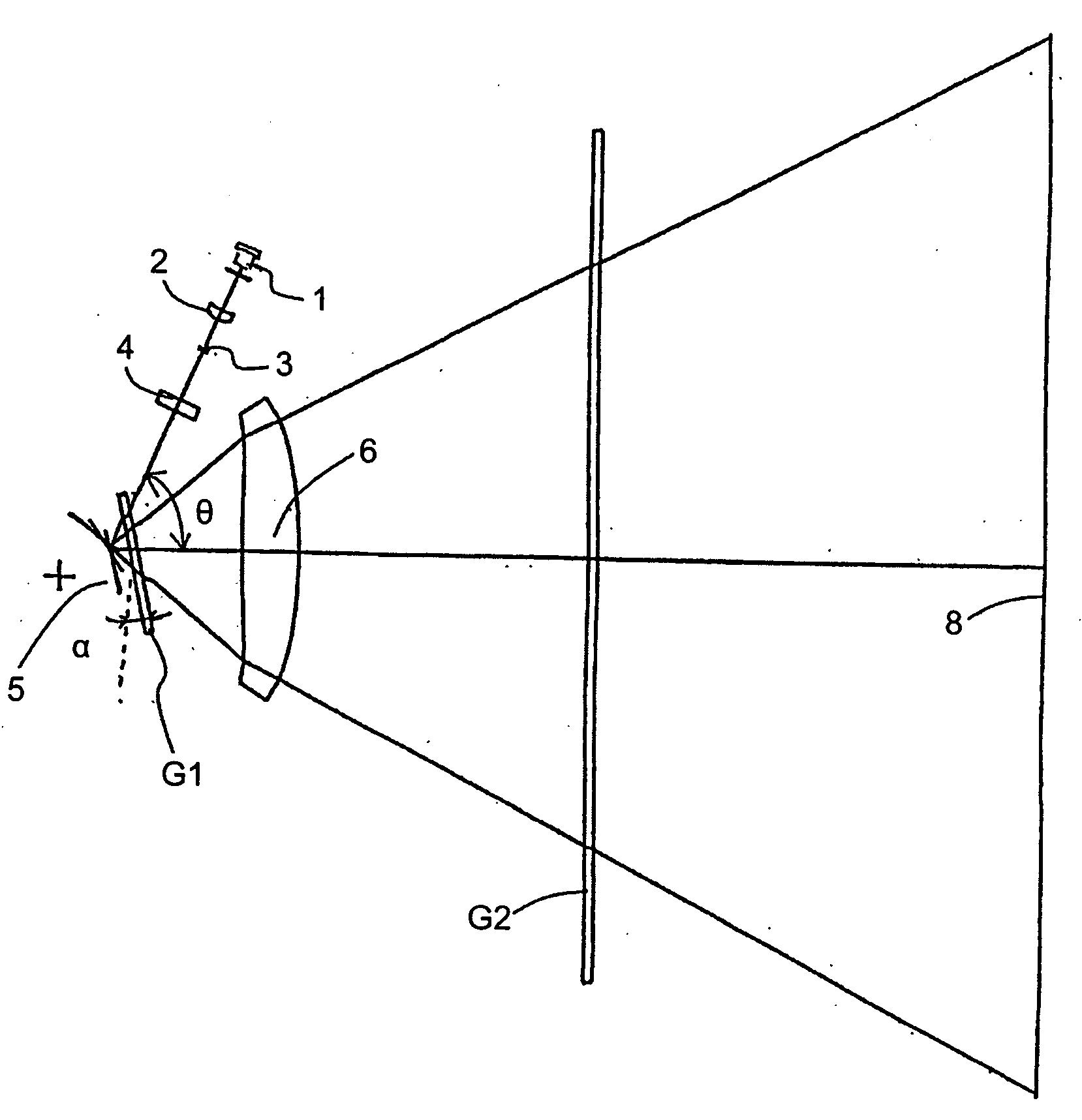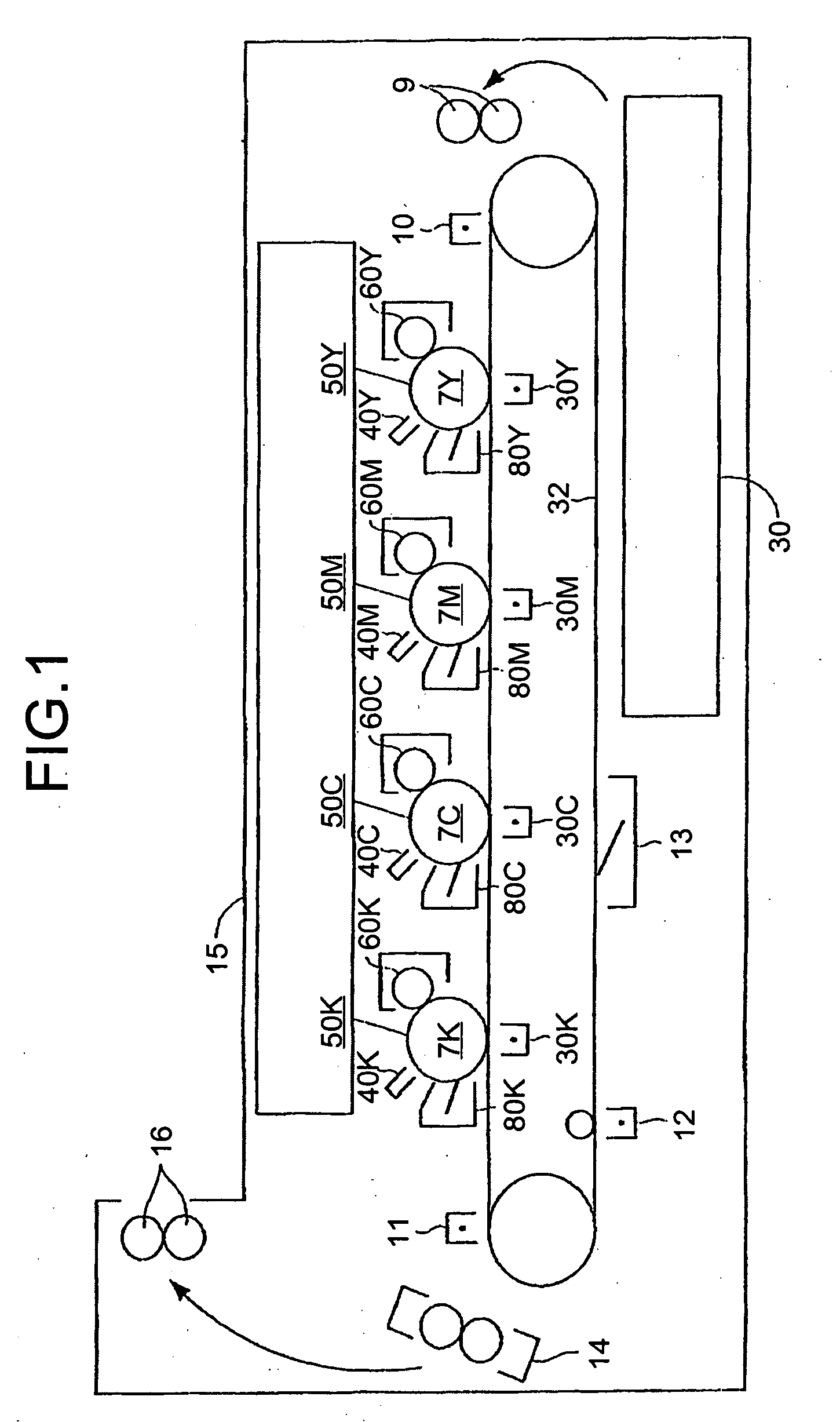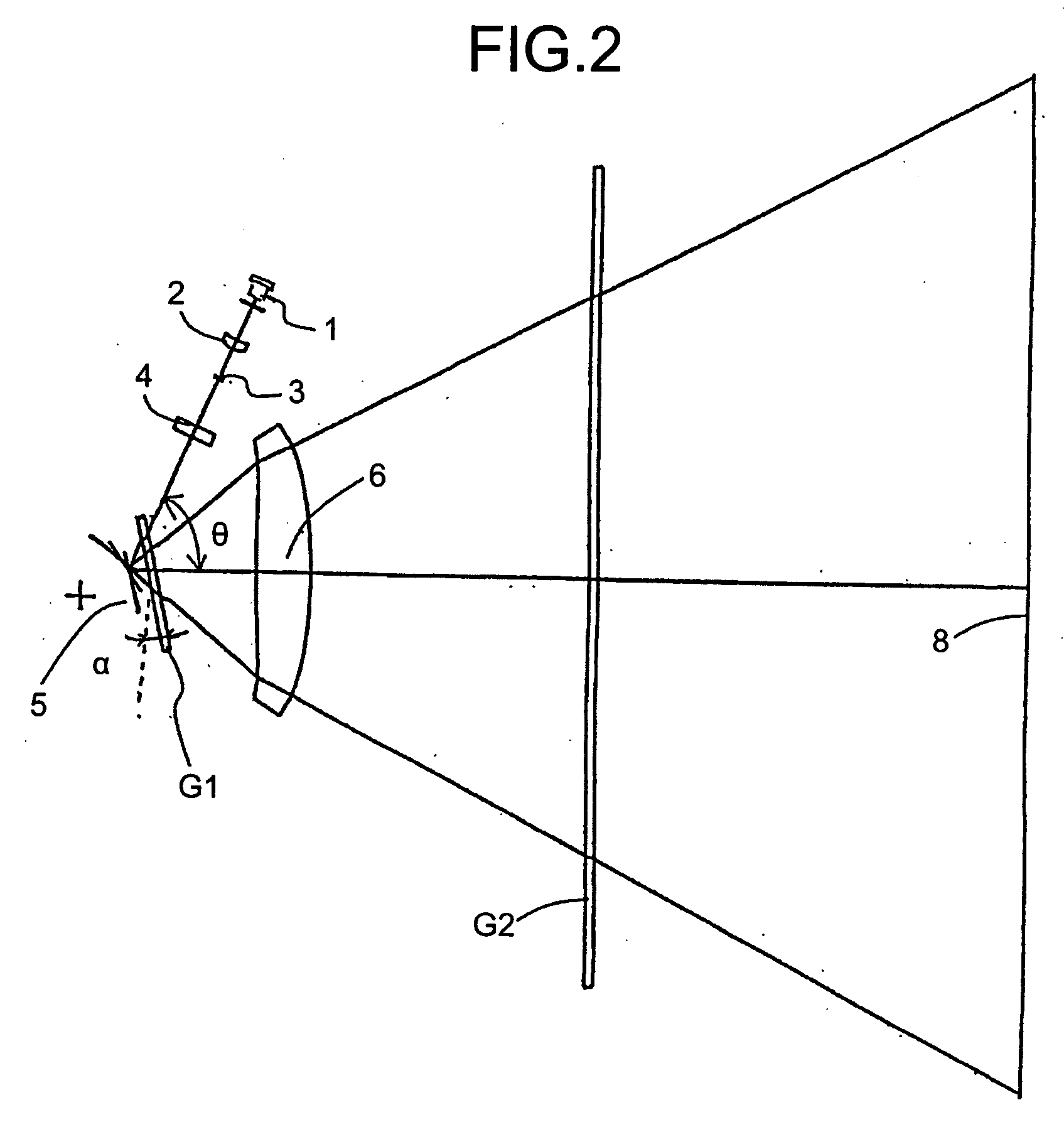Optical scanning device and image forming apparatus
a scanning device and image forming technology, applied in the field of optical scanning devices, can solve the problems of difficult manufacturing of such, power change, and design value variation of optical characteristics,
- Summary
- Abstract
- Description
- Claims
- Application Information
AI Technical Summary
Benefits of technology
Problems solved by technology
Method used
Image
Examples
first embodiment
[0073]A specific configuration of the respective components forming the optical system of the optical scanning device depicted in FIG. 2 is as follows.
[0074]The semiconductor laser 1 as a light source has a designed light-emitting wavelength of 785 nanometers. When the temperature increases by 1 degree Celsius with respect to the normal temperature of 25 degrees Celsius, the light-emitting waveform is shifted by 0.25 nanometers to a long wavelength side. As for the mode hop, a wavelength change of 0.8 nanometers is assumed, as mentioned above.
Coupling Lens:
[0075]The coupling lens 2 is a resin-made lens having the power diffracting surface as mentioned above, and is disposed so as to have a focal length of 13.952 millimeters and a function for conversion to a weak diverged light beam. One side surface of the coupling lens 2 is aspheric. With this aspheric surface, wave aberration of the light beam converted to have a desired cross-section shape is sufficiently corrected...
second embodiment
[0087]FIG. 4 is a configuration diagram that depicts an arrangement of optical elements of the optical scanning device according to the In FIG. 4, 1 denotes a semiconductor as a light source, 2 denotes a coupling lens as a first optical element, 3 denotes an aperture, 4 denotes an anamorphic optical element as a second optical element, 5 denotes a polygon mirror, which is a rotational polygon mirror as an optical deflector, 6 denotes a scanning optical system as a third optical element, and 8 denotes a surface to be scanned. Also, G1 denotes a sound-shielding glass for shielding a window of a sound-shielding housing (not shown) that has accommodated therein the polygon mirror 5, whilst G2 denotes a dustproof glass provided at a deflected-light-beam ejecting unit of a housing having accommodating therein the optical system of the optical scanning device depicted in FIG. 4.
[0088]A diverged light beam emitted from the semiconductor laser 1 is converted by the coupling lens 2 to a ligh...
third embodiment
[0132]Furthermore, the resin-made scanning lens can be easily adopted for an aspheric surface and a free surface. As initial characteristics, excellent optical characteristics including a small beam spot diameter can be ensured. With such configuration of each component optical characteristics including temperature characteristics, which have been solely problematic, can be improved.
[0133]As has been explained, the power of the entire surface is distributed over the refractive portion of the refractive surface 2b, thereby making an optical element resistant to eccentricity between surfaces. However, what is most desirable is that the power of the diffracting surface 2a is 0, specifically, P1=−P2. With this, it is possible to provide an optical scanning device with less deterioration in beam spot diameter even if the diffracting surface 2a is eccentric with respect to the refractive surface 2b.
[0134]Also, if the diffracting surface 2 has a stepwise configuration, a forming scheme c...
PUM
 Login to View More
Login to View More Abstract
Description
Claims
Application Information
 Login to View More
Login to View More - R&D
- Intellectual Property
- Life Sciences
- Materials
- Tech Scout
- Unparalleled Data Quality
- Higher Quality Content
- 60% Fewer Hallucinations
Browse by: Latest US Patents, China's latest patents, Technical Efficacy Thesaurus, Application Domain, Technology Topic, Popular Technical Reports.
© 2025 PatSnap. All rights reserved.Legal|Privacy policy|Modern Slavery Act Transparency Statement|Sitemap|About US| Contact US: help@patsnap.com



